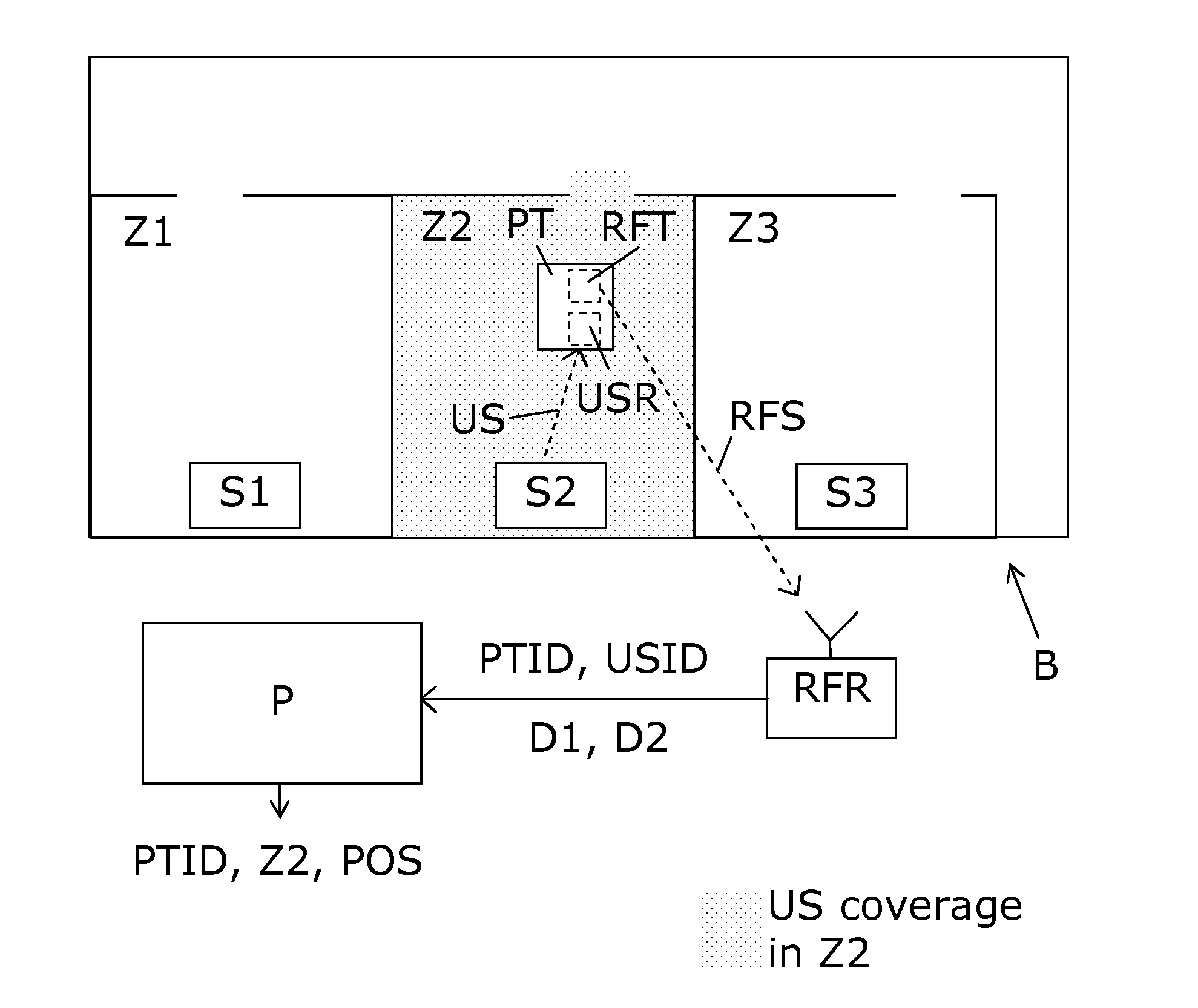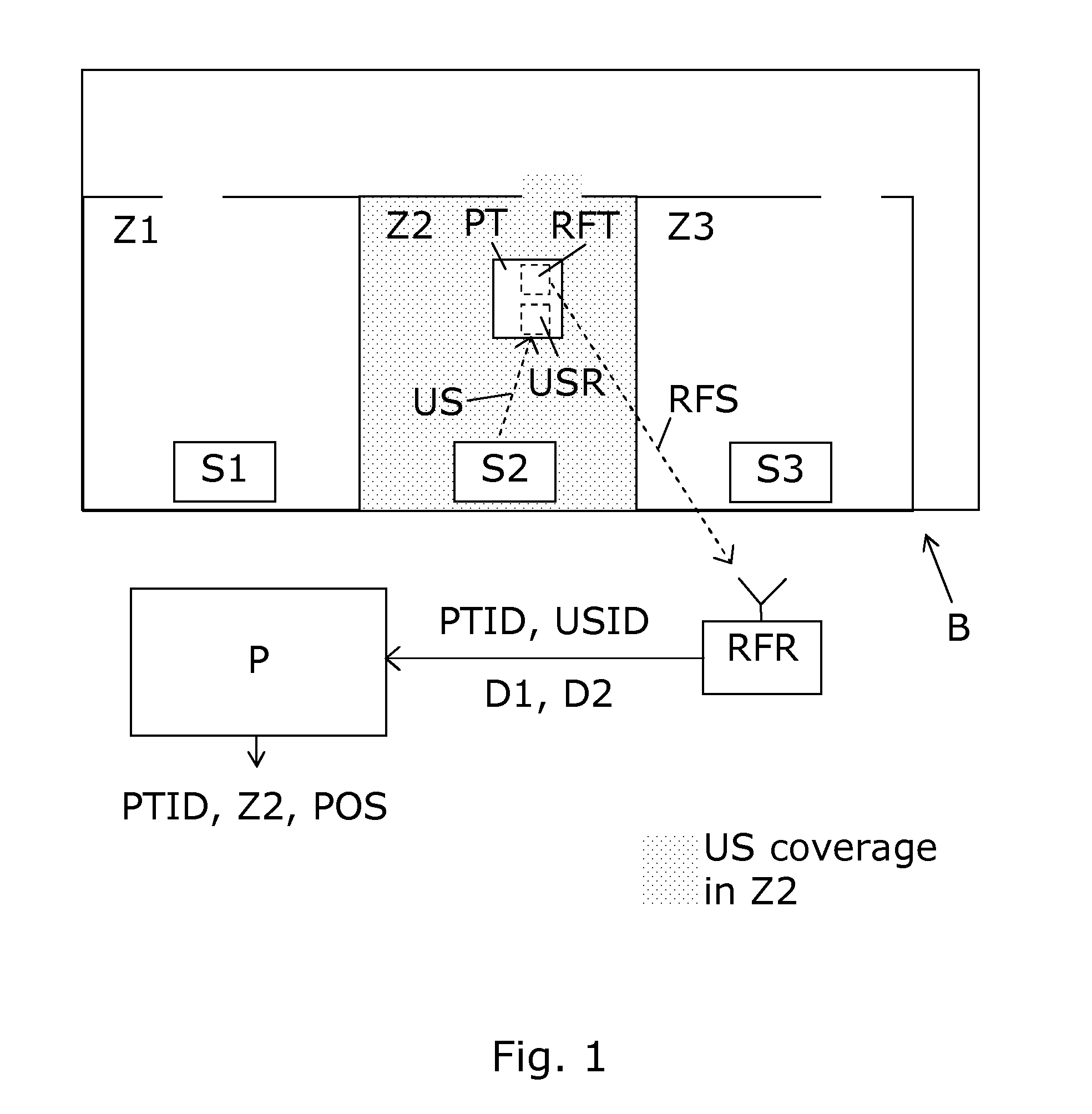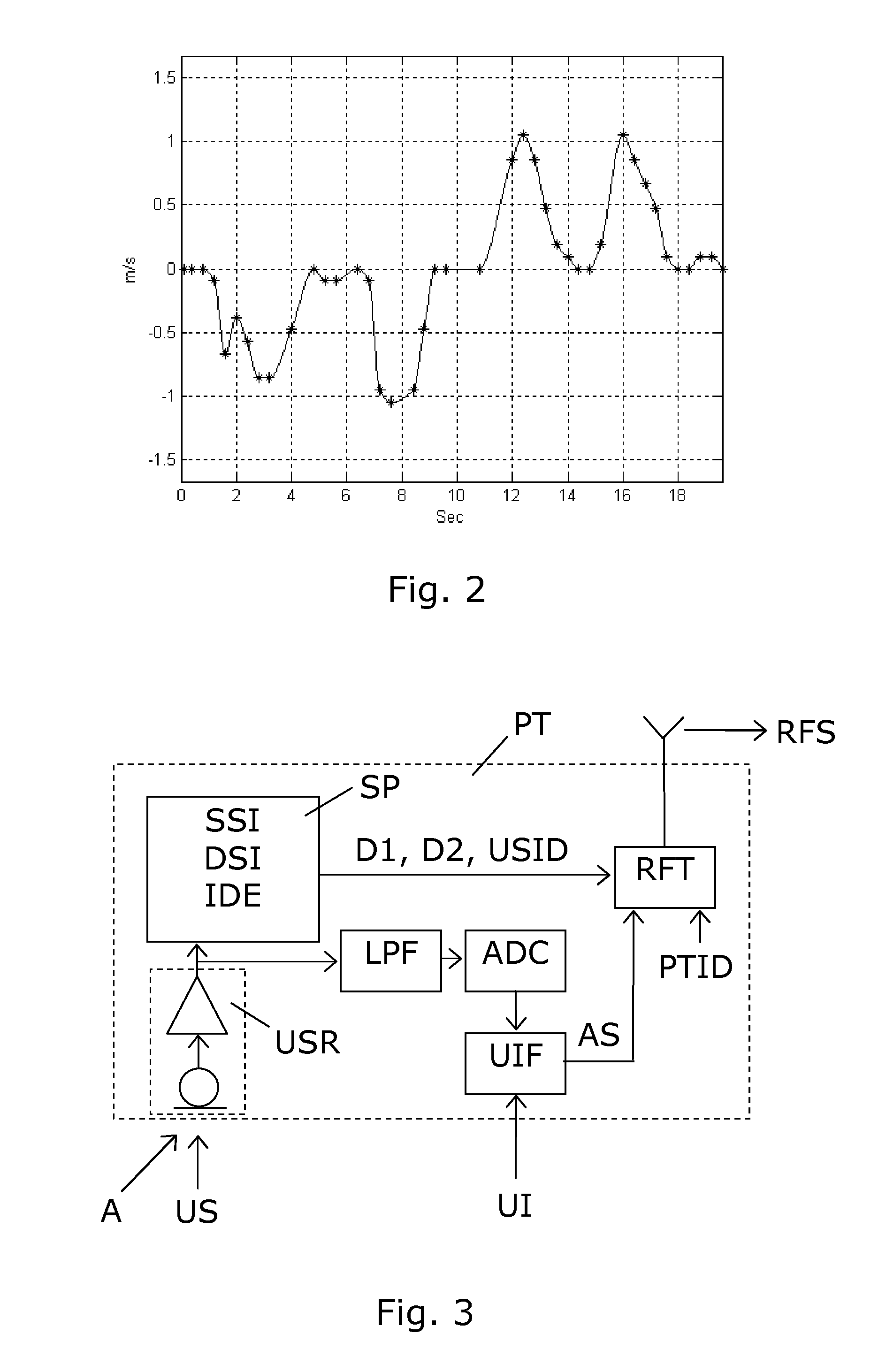Ultrasound zone location system with high capacity
a high-capacity, ultrasonic technology, applied in the direction of ultrasonic/sonic/infrasonic wave beacon systems, instruments, sensing details, etc., can solve the problems of ir sensing vulnerability, less suited rf signals, and rather few rf stations, so as to achieve high location precision, low power consumption, and reliable operation with rather few components
- Summary
- Abstract
- Description
- Claims
- Application Information
AI Technical Summary
Benefits of technology
Problems solved by technology
Method used
Image
Examples
Embodiment Construction
[0061]FIG. 1 shows an overall sketch serving to illustrate basic components of a rather simple embodiment of the zone location system according to the invention. A portable tag PT includes an RF transmitter RFT and a US receiver. The shown embodiment is arranged to locate in which of the zones Z1, Z2, Z3 the portable tag PT is present, the zones Z1, Z2, Z3 corresponding to rooms of a building B. US transmitters 51, S2, S3 are installed in the respective zones Z1, Z2, Z3 and transmit US signals indicated as ‘US’, and this US signal includes an ID code USID identifying the US transmitter. In the illustrated example, only US transmitter S2 is capable of providing US communication with the portable tag PT, and thus the portable tag PT receives the US signal US from the US transmitter S2 and its ID code USID. The portable tag PT transmits from its RF transmitter RFT an RF signal RFS with the USID and its own ID code PTID. Further the RF signal RFS includes first and second data values D1...
PUM
 Login to View More
Login to View More Abstract
Description
Claims
Application Information
 Login to View More
Login to View More - R&D
- Intellectual Property
- Life Sciences
- Materials
- Tech Scout
- Unparalleled Data Quality
- Higher Quality Content
- 60% Fewer Hallucinations
Browse by: Latest US Patents, China's latest patents, Technical Efficacy Thesaurus, Application Domain, Technology Topic, Popular Technical Reports.
© 2025 PatSnap. All rights reserved.Legal|Privacy policy|Modern Slavery Act Transparency Statement|Sitemap|About US| Contact US: help@patsnap.com



